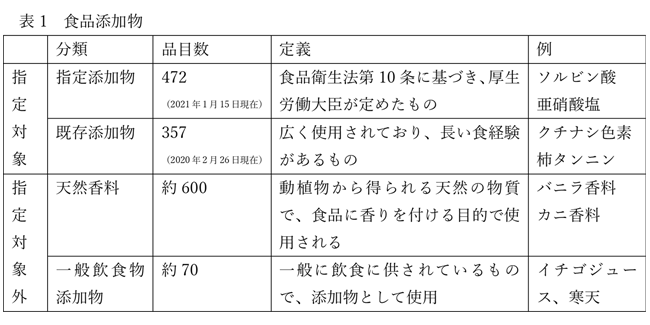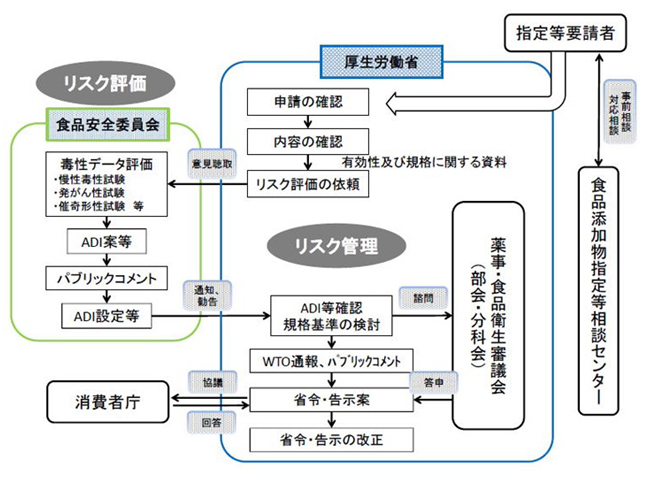Food additives that have progressed with science
50 years ago, the original man discovered that smoking meat would last for a long time.The longevity of meat is due to the action of acetic acid, propionic acid, and phenols in the smoke.With the progress of chemistry, such active ingredients became clear, and when the components could be separated and synthesized, they were used as food additives in food processing.
The Food Sanitation Law defines food additives as "things that are used in the process of manufacturing foods, or by methods such as adding or mixing with foods for the purpose of processing or preserving foods."There are many types, and they are classified into designated additives, existing additives, natural flavors, and general food additives according to their origin and usage (Table 1).

Some may think that "natural additives are safe", but now there is no distinction between natural and synthetic additives.
Until the Food Sanitation Law was revised in 1995, there were no strict regulations on food additives derived from natural products such as cuttlefish pigments, but these additives have been used for a long time, but their safety has not been confirmed. Only.Therefore, it is once classified as an existing additive and its safety is reviewed.So far, more than 100 existing additives have been removed from the list, including carcinogenicity and removal of Akane pigment.
After scientifically evaluating its safety and its effectiveness, it has been decided that only those approved by the Minister of Health, Labor and Welfare can be used as food additives.In the past, every major food accident has changed our efforts to ensure the safety of food additives.
In 2003, the Food Safety Basic Law was enacted for the purpose of protecting the health of the people, and the safety of food additives was judged by risk analysis.Risk analysis consists of risk assessment, risk management, and risk communication, and has a system to scientifically judge and manage the amount that does not adversely affect humans (Fig. 1).
The usage standards are set so as not to exceed the acceptable daily intake obtained from the results of animal experiments conducted on each food additive.With the progress of science and technology, even the food additives that have already been designated are being re-evaluated according to the current scientific level.Of course, manufacturers of food additives are also working on their own to ensure safety.

Fig. 1 Flow of food additive designation
Based on the idea that risks should be evaluated scientifically and managed appropriately on the premise that any food has risks (risk analysis).
From sugar substitutes to diet sweets
Sweeteners are classified into sugar-derived sweeteners and non-sugar-derived sweeteners (Table 2), and non-sugar-based ones are often used in diet foods because they are difficult to metabolize.

The frequent use of sweeteners was to make up for the sugar deficiency during and after World War II.Dulcin, cyclamate (sodium cyclamate), and saccharin, which were commonly used at that time, were later removed from the food additives because they were found to be carcinogenic.That's probably why sweets have a bad image.
However, after that, it was found that the carcinogenicity of saccharin was due to the impurities formed when synthesizing saccharin, and it was used again.In addition, cyclamate has been banned in the United States, Canada, and Japan due to its safety evaluation, but it is used in more than 50 countries such as the EU and China.
Although sugar is an ideal sweetening agent, it is unsuitable for people with diabetes and can cause tooth decay and obesity.Therefore, it is now often used as a diet food and a sweetener for diabetics rather than as a sugar substitute.Each has its own characteristics of sweetness, and when the amount is large, it feels bitter and has different stability to heating.Therefore, it is used properly according to the purpose.
